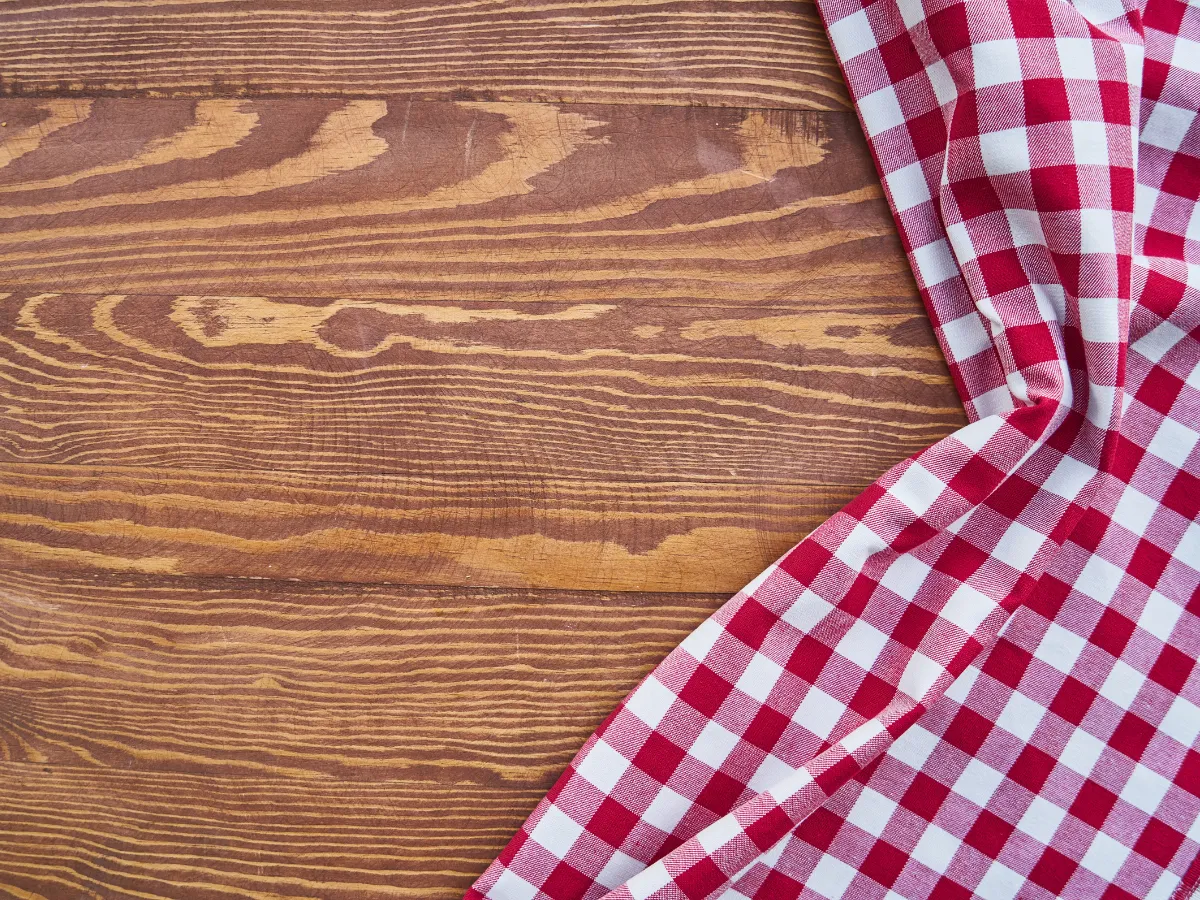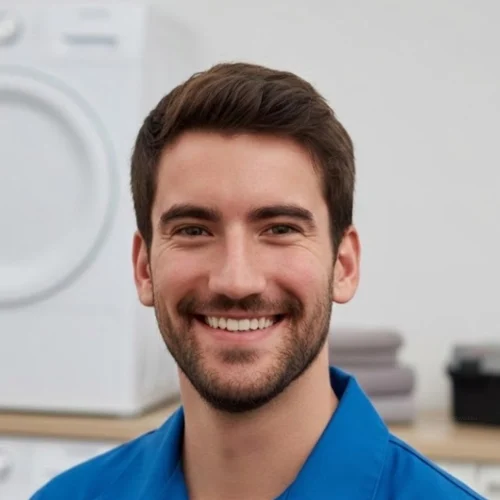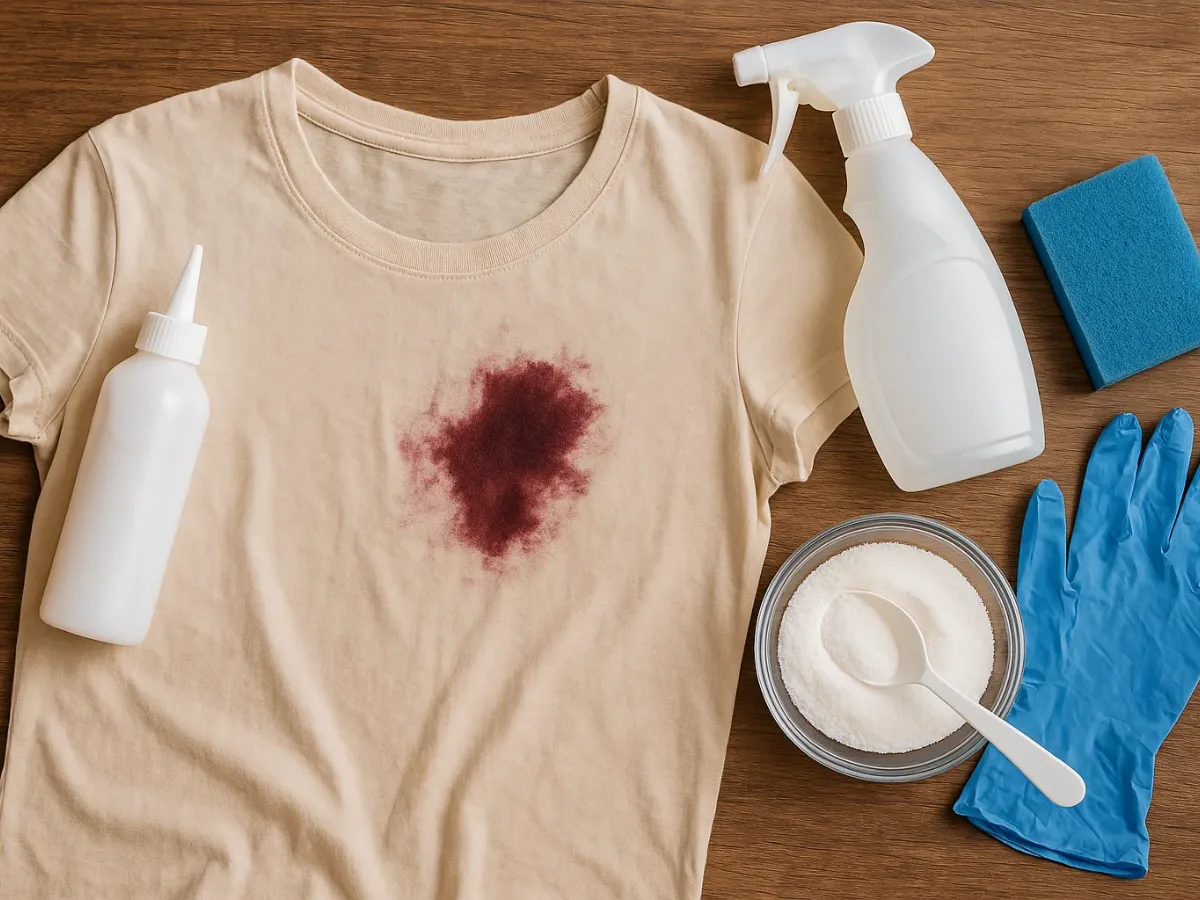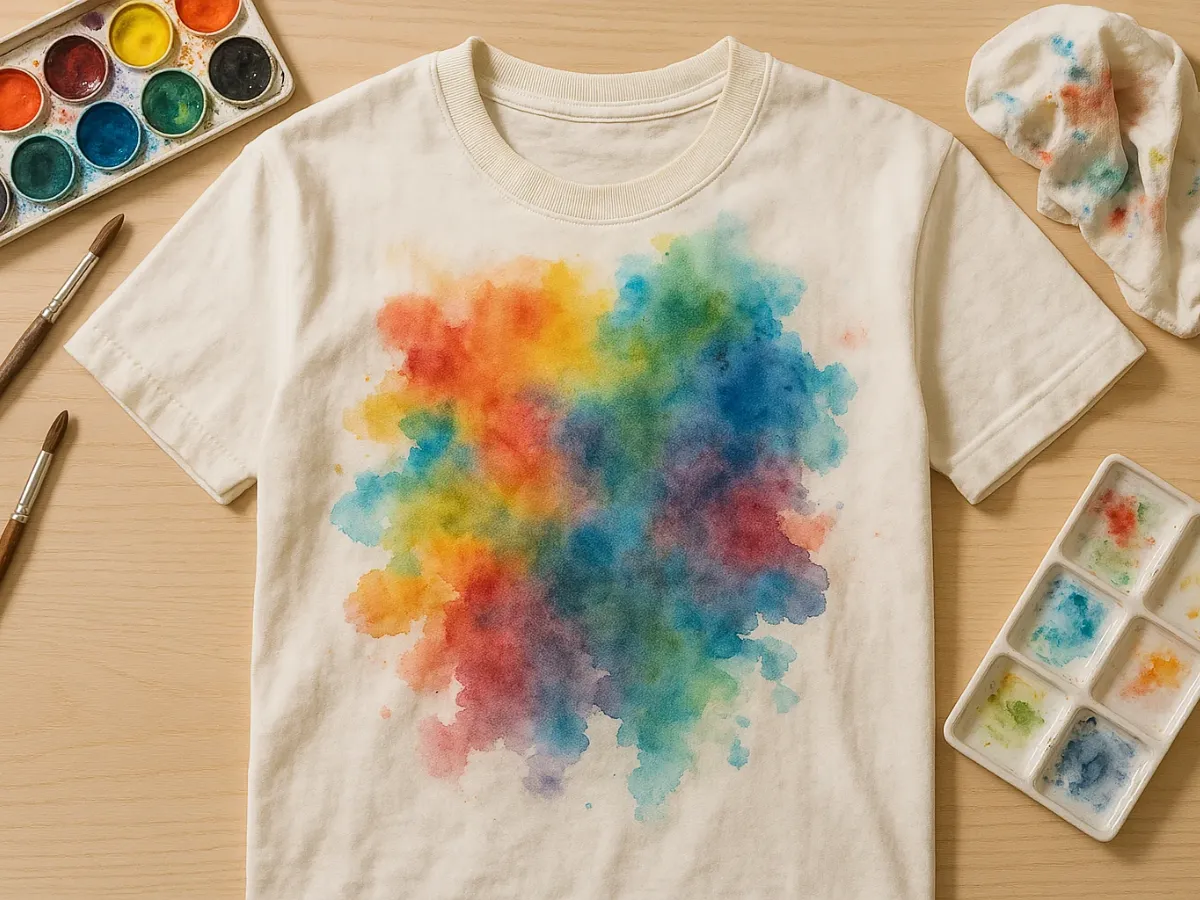Textile Rescue: How to Remove Old Stains from Colored Tablecloths Without Fading

Taking out that beautiful colored tablecloth for a special occasion only to discover an old stain you didn't remember (or that didn't come out last time) can ruin any preparation. Old stains, especially on colored fabrics, present a double challenge: not only are they harder to remove because they've had time to set into the fibers, but we also risk fading the tablecloth while trying to lift them. Is it mission impossible? Not necessarily! Learning how to remove old stains from colored tablecloths requires patience, the right products, and, above all, great caution.
In this detailed guide, we'll offer you a step-by-step approach and several effective and safe methods to treat those stubborn stains (whether from grease, wine, food, or simply yellowing over time) without sacrificing the vibrant colors of your favorite tablecloths.
The Challenge of Old Stains on Color: Why Is It So Hard?
Stains become more difficult over time for several reasons:
- Chemical Setting: The stain components (pigments, fats, sugars, proteins) chemically react with the fabric fibers, creating stronger bonds over time.
- Oxidation: Exposure to air and light can oxidize the stain, changing its chemical composition and making it more resistant (this causes the typical yellowing on stored clothes).
- Previous Heat: If the tablecloth was previously washed and/or dried with heat without the stain being completely removed, the heat will have helped set it even deeper. Heat acts like "glue" for many stains.
- The Color Challenge: Unlike white tablecloths where we can use powerful bleaches, on colored ones, we must be extremely careful not to remove the original dye along with the stain.
Golden Rules Before Starting the "Rescue"
Before applying any product, always keep in mind:
- Read the Label: Fundamental! Check the fabric composition (cotton, linen, polyester, blend...) and washing instructions (maximum temperature, permitted products...). Correctly interpreting wash labels is the first step.
- ALWAYS Test Colorfastness!: Before applying any product (even homemade ones like vinegar or baking soda) to the visible stain, test it on a very inconspicuous area of the tablecloth (an inner hem, a corner on the reverse side). Apply a little, wait a few minutes, and rinse. If there's no discoloration or damage, you can proceed more safely.
- Start Mild: Always try the least aggressive methods first.
- Cold or Lukewarm Water: Use cold or at most lukewarm water to treat the stain and wash. Hot water can set old stains further or damage colors.
- Don't Rub Harshly: Excessive friction can damage fibers and spread the stain. It's better to apply the product and let it work, rubbing very gently only if necessary.
- Patience and Repetition: Old stains rarely come out on the first try. Be prepared to repeat the treatment and washing process several times.
- Avoid Chlorine Bleach: It's the number one enemy of colors. Never use it on colored tablecloths!
Step 1: Rehydrate the Old Stain
Dried stains are like textile fossils. The indispensable first step is to try to "wake them up" and soften them.
- Prolonged Cold Water Soak: Submerge the entire tablecloth (or at least the large area around the stain) in a large basin with cold water. Let it soak for several hours, even overnight if the stain is very old or stubborn.
- Add Mild Detergent (Optional): You can add a tiny splash of mild liquid detergent (pH neutral) to the soaking water to start dissolving dirt.
This step helps the fibers relax and makes the stain more receptive to subsequent treatments.
Step 2: Specific Treatments (After Testing!)
After soaking, remove the tablecloth, gently squeeze out excess water (don't wring), and apply one of these treatments to the still damp stain:
A. Baking Soda and White Vinegar Paste
A relatively safe homemade option for many colors (but test first!).
- Preparation: Mix baking soda with a little white vinegar to form a fizzing paste.
- Application: Cover the stain generously with the paste.
- Action Time: Let it sit for 20-30 minutes.
- Gentle Brushing: Very gently rub the area with an old toothbrush or cloth.
- Rinse: Rinse well with cold water.
Useful for organic stains, food, or slight yellowing. Discover more about washing with baking soda.
B. Direct Liquid Detergent
Simple but often effective, especially if the stain has greasy components.
- Application: Pour liquid detergent (preferably neutral or for colored clothes) directly onto the damp stain.
- Massage and Rest: Gently rub the detergent into the stain with your fingers. Let it sit for at least 30 minutes, or even a couple of hours.
- Rinse: Rinse with cold or lukewarm water.
C. Grease Treatment (Dish Soap / Degreaser)
If you suspect the old stain is grease (oil, sauces...):
- Application: Try applying liquid dish soap (excellent degreaser) or a mild kitchen degreaser (with extreme caution and pre-testing!) to the dry or slightly damp stain.
- Action Time: Let sit for 15-30 minutes.
- Rub Gently and Rinse: Scrub with a brush and rinse with warm water if possible.
Check our specific guide for removing oil stains.
D. Oxygen Bleach (Sodium Percarbonate)
One of the most powerful yet relatively safe options for solid and durable colors (TESTING IS MANDATORY!). Ideal for organic stains (wine, coffee, fruit, mold) and yellowing.
- Preparation: Dissolve 1-2 tablespoons of sodium percarbonate per liter (quart) of WARM water (needs at least 40°C/104°F to activate well, but don't exceed the tablecloth's label max temperature).
- Prolonged Soak: Submerge the tablecloth in the solution and let it soak for several hours (4-8 hours or overnight). Ensure the garment is fully submerged.
- Rinse: Rinse very well with cold water.
This method can revitalize dull colors in addition to removing stains.
E. Highly Diluted Ammonia (Last Resort with Caution)
For very stubborn grease or sweat stains on durable fabrics.
- Extreme Dilution: Mix only a few drops of ammonia in a liter (quart) of cold water.
- Application and Ventilation: Wear gloves, ventilate the room well. Apply the solution with a cloth by dabbing gently onto the stain.
- Immediate Rinse: Don't let it sit for long. Rinse thoroughly with cold water.
- Mandatory Test!: Can easily cause fading.
Step 3: The Final Wash (and Verification)
After the specific treatment:
- Wash the Tablecloth: Put it in the washing machine (preferably alone or with very similar colored items).
- Program and Temperature: Use a normal or delicate cycle with cold or lukewarm water (per label).
- Detergent: Use a detergent for colored clothes.
- Extra Rinse: If possible, select an additional rinse cycle to remove any treatment product residue.
- Inspection BEFORE Drying!: When taking the tablecloth out of the washer, and while still damp, meticulously check the stained area under good light.
- Still There?: If the stain persists (even faintly), DO NOT DRY THE TABLECLOTH WITH HEAT (neither dryer nor direct sun). Go back to Step 2 and repeat the treatment (you can try a different method if the first one didn't fully work).
- Stain Gone!: If the stain has completely disappeared, congratulations! You can proceed to drying.
Step 4: Safe Drying for Colored Tablecloths
- Air Dry in Shade: The best option for colored tablecloths is to hang them outdoors in the shade, or indoors in a well-ventilated area. Prolonged direct sunlight can fade colors.
- Avoid the Dryer (Generally): Unless the label specifically allows it and you use low heat, it's best to avoid the dryer for colored tablecloths to prevent potential shrinkage or setting of residual stains.
Frequently Asked Questions about Old Stains on Tablecloths
How to remove old stains from tablecloths?
Soak in cold water, treat with baking soda/vinegar paste, liquid detergent, or percarbonate (if color/fabric permits, testing first). Wash cold/lukewarm and repeat if needed.
Is it possible to remove stains that are years old?
Yes, with patience and the right methods (soaking, potent treatments like active oxygen, repetition), although some deeply set stains might be permanent.
How to remove old stains from colored clothes?
Prioritize color safety: test products in hidden areas. Use detergent, baking soda/vinegar, or color-safe stain removers/oxygen bleach. Avoid chlorine bleach.
How can I remove grease stains from colored tablecloths?
Apply dish soap or a degreaser (test first), let sit, scrub gently, and wash with warm/cold water.
Removing old stains from colored tablecloths is a challenge requiring care and persistence. Always remember to prioritize color safety by testing and using appropriate products. With a little effort, you can bring life and color back to your tablecloths!
Impeccable Tablecloths Without Effort? Trust LaColada!
Dealing with old stains, especially on large colored tablecloths, can be a laborious task. If you prefer to save time and ensure a deep, careful clean, bring them to LaColada Self-Service Laundry Ponferrada. Our large-capacity washing machines and professional detergents (with active oxygen included) are ideal for treating all types of textiles, helping to remove tough stains while caring for colors. Enjoy your meals on spotless tablecloths thanks to LaColada!
Wash Your Tablecloths at LaColada Ponferrada
Sebastián R.
More than 10 years at the helm of Lacolada Lavanderia Autoserivico Ponferrada and repairing industrial and domestic machinery in my spare time. You won't find unverified theories from the internet here, just real solutions tested by someone who gets their hands dirty every day.
More Guides to Combat Stains

How to Remove Paint Stains (Water, Oil, Acrylic)
Complete guide to remove different types of paint from clothes.

How to Remove Hair Dye Stains from Clothes
Effective solutions to remove dye stains without damage.

Watercolor Stains on Clothes: How to Remove Them
Simple steps to remove water-based paint stains.